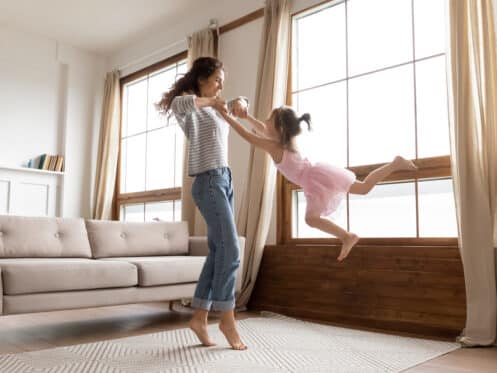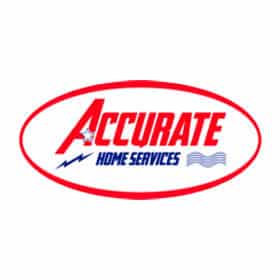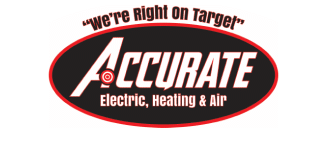Indoor air quality services are something that Crandall homeowners have shown interest in over the last few years. A lot of people think they just have to add an air purifier to a room and they’re good to go. However, improving your home’s air quality is a multifaceted endeavor. Ignoring certain key components will leave you with unhealthy indoor air quality. Use this guide to learn seven simple steps that will improve your home’s indoor air quality.
Why Is Air Quality So Important?
Indoor air quality is a broad term that refers to the different particulates floating around in your indoor air, contaminants, humidity, and even various gases. Over the last few years, the focus has shifted to the role indoor air quality plays in personal health. Poor air quality is associated with everything from allergy and asthma triggers to chronic sinus and respiratory infections.
Indoor air quality also impacts how your HVAC system runs, including its efficiency and lifespan. Don’t forget about how it also affects your home’s cleanliness, especially when it comes to dust.
Step 1: Monitor and Change Your Air Filter
Your HVAC system includes one of the most important components in managing indoor air quality: your air filter. This seemingly simple device is one of the most effective tools for removing contaminants from your air. However, you must change it regularly for it to continue performing its job well.
Plan to check it monthly to assess whether or not it needs to be changed. When it becomes visibly dirty, replace it with a similar type, ensuring you get the right size. When you check it each month, gently vacuum the intake side to get an efficiency boost between changes.
Step 2: Manage Your Humidity
Humidity is something we all think of when the weather outside feels heavy and uncomfortable. However, it’s also a key factor in managing your home’s air quality, with both too much and too little being problematic. According to the EPA, the ideal indoor humidity range is between 30% and 50%.
Too Much Humidity in the Summer
The summers in Crandall can get quite humid, leading to excessive humidity inside. From an air quality perspective, too much humidity in your home encourages biological contaminant growth, releasing more spores into the air.
While your air conditioner will remove some humidity, your home may need additional dehumidification. A whole-house dehumidifier can manage humidity by distributing drier air throughout your home as your HVAC system runs.
Too Little Humidity in the Winter
Over the winter, the humidity throughout the area drops significantly. Not only does this dry out your skin, but it makes airborne contaminants lighter, allowing them to stay in the air longer.
Many people will use a humidifier in bedrooms to help ease wintertime breathing issues. However, this creates the risk of too much humidity in a single room while leaving the rest of the house too dry. The optimal solution is a whole-house humidifier to evenly distribute extra moisture throughout your home.
Step 3: Keep Up On Household Chores
Whether you love cleaning or not, the reality is that household chores play an important role in air quality management. The chores that affect air quality the most include vacuuming and dusting. When you don’t attend to these tasks regularly, you allow contaminants to build up in your home. As the air circulates throughout your home, it can pick up some of these particles and start circulating them in the air again. Use a vacuum with a built-in HEPA air filter to properly trap particulates.
Step 4: Ensure Proper Ventilation
Many people believe that having a sealed home is the best way to improve HVAC efficiency and protect air quality. However, every building depends on good ventilation, which is the exchange of air inside your home for air outside. When you have proper ventilation, you allow stagnant gases like excess carbon dioxide to leave while drawing in fresh air. Some houses get great ventilation with passive vents in the attic. However, most homes can achieve improved air quality by simply opening up a few windows or doors for a minimum of 15 minutes each day.
Step 5: Reduce Contaminant Sources
You want to be careful about increasing sources of contaminants in your home. Keeping a rug at the front door and taking your shoes off at the door helps reduce contaminants coming inside.
Burning candles and air fresheners also add contaminants, which can range from soot from a wick to chemicals like formaldehyde.
Step 6: Maintain Your HVAC System
Keeping your system properly maintained by way of routine HVAC appointments is incredibly important for keeping your system running efficiently. This can also reduce your heating and cooling bills. However, it also plays a key role in managing your indoor air quality.
Routine HVAC Maintenance
The most frequent maintenance you’ll need is an annual routine inspection of your system. For the common furnace and air conditioner system, the recommendation is one to two maintenance visits annually. This should include a visit to your air conditioner and also to your furnace. From an air quality perspective, keeping your system properly maintained maximizes the air flowing through the filter, allowing it to remove more contaminants. Your technician will clean contaminants from components like the heat exchanger, evaporator coil, and circulating fan, eliminating the particles available for the circulating air to pick up and carry back into your home.
Duct Cleaning
Routine duct cleaning is another way that you can improve your indoor air quality. Your ducts can become quite dirty with various contaminants, ranging from dirt and dust to animal nests and feces. All of these components will add various contaminants to your home’s air as the system moves air through the ducts. The industry recommends cleaning your ducts every 3 to 5 years, or after major projects that create a lot of dust, like doing drywall work or indoor woodworking.
Step 7: Install Additional Air Purification
Finally, you may want to consider additional devices to help improve your home’s air quality. There are various types of air purifiers that come with a wide variety of technologies. There are ionizing air scrubbers, which release negatively charged ions into the air that act as magnets for airborne contaminants, making them stick together and drop from the air. There are also UV air purifiers, which use ultraviolet light to make many active airborne contaminants inert. This includes mold spores, viruses, and even some odor-causing particles.
The right air quality improvement approach for your home depends on your current air quality and the specific airborne contaminants that you’re dealing with. A trained indoor air quality specialist can perform an air quality test and make recommendations for your home.
Since 1992, property owners around Crandall have trusted Accurate Home Services to keep their homes comfortable and their air safe. Our expert team provides customized indoor air quality solutions and duct cleaning, together with heating and AC installation, maintenance and repair, and a full range of electrical services. Call to schedule a consultation with one of our indoor air quality experts today.




